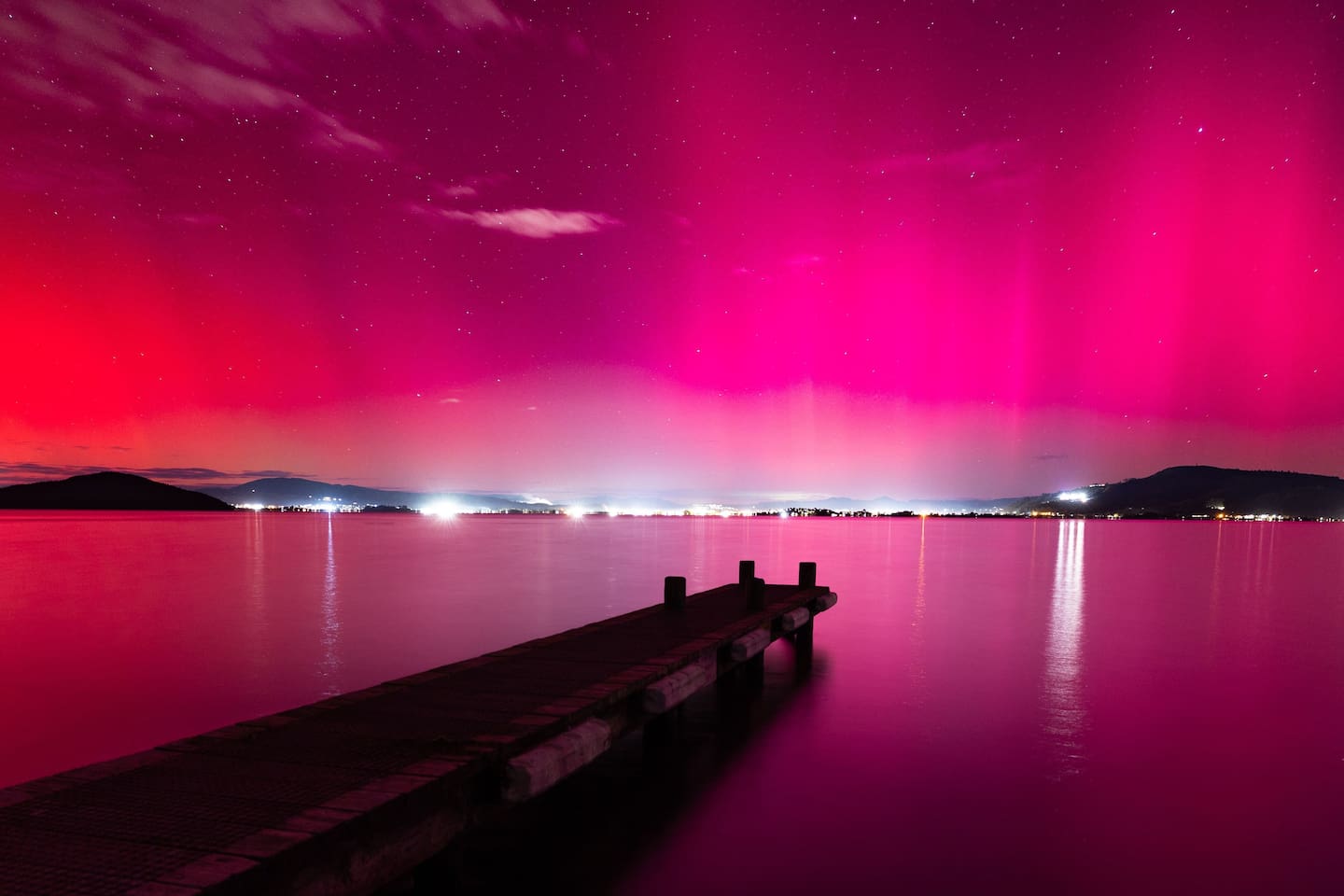By David Bell of RNZ
People across Aotearoa have been given a rare glimpse into the mechanics of the sun and its effects on our planet this weekend, after a strong solar storm caused aurora to be visible across vast swathes of the Northern and Southern hemispheres.
The solar storm spurred infrastructure companies, including Transpower, to issue warnings and take steps to minimise any disruptions.
Scientists agree that the sun is undergoing a period of intense activity, which occurs in 11-year cycles.

The dazzling aurora lights were spectacular. Photo / Alex cairns
Solar flares and coronal eruptions have been detected by the Space Weather Prediction Center (SWPC) in the United States, which has been tracking several flares from a cluster of sunspots since 8 May.
The cluster is estimated to be 16 to 17 times the diameter of the Earth and led to the first severe warning since 2005.
How frequent are solar storms in NZ?
Otago University physics professor Craig Rodger told RNZ that despite the storm reaching G5 - the top of the National Oceanic and Atmospheric Administration (NOAA) SWPC scale for geomagnetic storms - it had only just done so.
It was the largest such solar storm for more than a decade in New Zealand - but not as big as those of 2003 or 2001, and he said we had learned a lot since then.
Rodger had been working on understanding and modelling the impacts of a severe solar storm on New Zealand’s electricity grid.
- Missed the aurora? Who could catch another glimpse tonight
- 'Just incredible': Stunning aurora lights up NZ skies – plus the best place to catch it tonight
The current storm was smaller than the one in 2001, which knocked out a power transformer in Dunedin - an event also known as a geomagnetically induced current hot spot.

Greg Campbell was delighted to capture a new bride and groom in front of the aurora. Photo / Greg Campbell.
Why are the Southern Lights so colourful?
Usually, particles from solar flares bounce off the Earth’s magnetic field, but when there is a severe eruption, they can penetrate the ionosphere and interact with gases around the magnetic poles - causing the ribbons of colour.
Auroras are usually confined to certain latitudes in the north and south, which makes them relatively rare to observe for most of the population.
The pinks, purples and greens that are often associated with aurora are the particles interacting with different gasses. Simply put, oxygen - which emits greenish-yellow or red light - and nitrogen - which emits blue light - in the upper atmosphere release specific colours when bombarded by solar radiation.
Atoms, molecules and ions in the atmosphere are excited by the electrically charged particles and, in turn, release photons - which is the light we see.
Black aurora
This might sound like an oxymoron, but black aurora are nevertheless a real and unusual phenomenon.
Black aurora often form in bands, curls and sometimes blobs in the centre of more colourful aurora. According to the European Space Agency, these “anti-aurora” form when particles are pushed up out of the ionosphere rather than down to collide with gasses in the atmosphere.
How do aurora affect our weather?
The sun’s impact on Earth is clear, but geomagnetic storms, while looking pretty, also affect our climate.
Writing in The Conversation, Associate Professor in Geophysics Annika Seppälä at the University of Otago explains how molecules in the atmosphere are ionised as a result of intense amounts of solar particles, which sets off a chain reaction - producing chemicals that impact the ozone layer.
The depletion in ozone causes serious and globally felt changes to rainfall patterns and sea surface temperatures.
Do aurora make noise?
Some people have reported a hissing or clapping sound associated with auroras.
While these have traditionally been dismissed by scientists, a 2016 Finnish study claimed to have found that the Northern Lights did make a sound audible to the human ear. One researcher claimed that they even captured a recording of these sounds.
Take your Radio, Podcasts and Music with you









